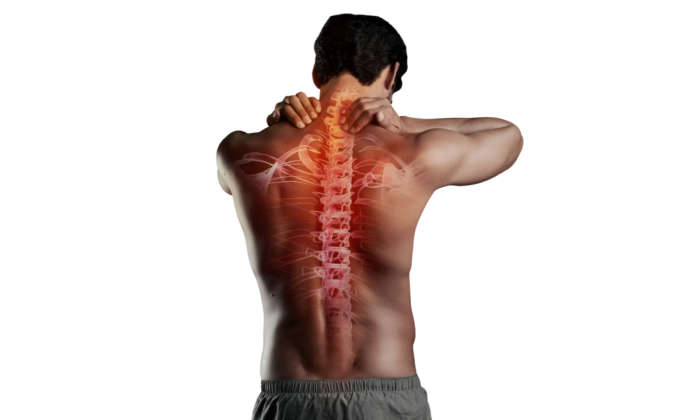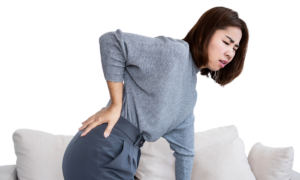
Definition of Spinal Stenosis
Spinal stenosis refers to the narrowing of the spaces within your spine, which can put pressure on the spinal cord and the nerves that travel through it. This narrowing can occur in any part of the spine, but it is most common in the lower back (lumbar spinal stenosis) and the neck (cervical spinal stenosis). While some individuals with spinal stenosis may experience no symptoms, others can develop pain, numbness, tingling, and muscle weakness, which may worsen over time.
Types of Spinal Stenosis
Spinal stenosis is typically categorized by the region of the spine affected and the specific area of narrowing:
· Lumbar Spinal Stenosis: The most common type, where narrowing occurs in the lower back. This can affect the nerves that go to the legs, often causing symptoms in the buttocks and legs.
1. Central Canal Stenosis: Narrowing of the main spinal canal, which can compress the spinal cord itself (in the cervical and thoracic regions) or the bundle of nerves (cauda equina) in the lumbar region.
2. Foraminal Stenosis (Lateral Stenosis): Narrowing of the bony openings (foramina) through which spinal nerves exit the spinal canal. This can compress individual nerve roots.
3. Lateral Recess Stenosis: A type of foraminal stenosis where the compression occurs just before the nerve exits the foramen.
4. Far Lateral Stenosis: Compression of the nerve root after it has exited the intervertebral foramen
· Cervical Spinal Stenosis: Narrowing in the neck region, which can put pressure on the spinal cord or nerves leading to the arms and hands.
· Thoracic Spinal Stenosis: Less common, this involves narrowing in the middle part of the back.
Symptoms of Spinal Stenosis
The symptoms of spinal stenosis often develop gradually and can vary depending on the location and severity of the narrowing. Common symptoms include:
· Pain: Can occur in the back, neck, arms, or legs. Lumbar stenosis often causes pain, aching, cramping, or heaviness in the legs, typically worse with standing or walking and relieved by sitting or leaning forward. Cervical stenosis can cause pain and stiffness in the neck and arms.
· Radiating Pain: Similar to sciatica (which can be a symptom of lumbar stenosis), pain may travel down the leg or arm.
· Numbness or Tingling: A “pins and needles” sensation or loss of feeling in the affected limbs (legs, feet, arms, hands).
· Muscle Weakness: Difficulty moving the legs or arms, or experiencing “foot drop” (difficulty lifting the front part of the foot).
· Balance and Walking Difficulties: Due to nerve compression affecting motor function and sensation.
· Bowel or Bladder Dysfunction: In severe cases, particularly with cauda equina syndrome (a rare but serious complication of lumbar stenosis), there can be loss of bowel or bladder control.
Causes of Spinal Stenosis
Spinal stenosis is most commonly caused by age-related wear and tear on the spine, leading to degenerative changes. However, other factors can contribute:
· Osteoarthritis: The most common cause, where the cartilage cushioning the joints breaks down, leading to bone spurs (osteophytes) that grow into the spinal canal.
· Herniated Discs: The soft, gel-like material within a spinal disc can bulge or rupture, pressing on the spinal cord or nerves.
· Thickened Ligaments: The tough ligaments that help hold the spine together can thicken and stiffen over time, bulging into the spinal canal.
· Spinal Injuries: Trauma, such as fractures or dislocations of vertebrae, can narrow the spinal canal.
· Spinal Tumors: Although rare, abnormal growths within or near the spinal canal can compress the nerves.
· Spondylolisthesis: A condition where one vertebra slips forward over another, narrowing the spinal canal.
· Congenital Spinal Stenosis: Some individuals are born with a naturally narrower spinal canal.
· Paget’s Disease of Bone: A condition that causes abnormal bone growth, which can lead to spinal narrowing.
Who Can Suffer from Spinal Stenosis?
While anyone can develop spinal stenosis, certain factors increase the risk:
· Age: It is most common in individuals over 50 due to the cumulative effects of degeneration. Younger individuals can develop it due to congenital factors or injury.
· Degenerative Conditions: Conditions like osteoarthritis and degenerative disc disease significantly increase risk.
· Genetics: A family history of spinal stenosis can increase susceptibility.
· Spinal Trauma: Previous injuries to the spine can predispose individuals to stenosis.
· Spinal Deformities: Conditions like scoliosis (abnormal curvature of the spine) can narrow the spinal canal.
· Obesity: Excess weight puts additional stress on the spine.
· Sedentary Lifestyle: Weak core muscles and lack of physical activity can contribute to spinal problems.
For more information Visit us :
Website: http://www.healthsrainbow.com/
Website Blog: https://www.healthsrainbow.com/blog/
Subscriber: https://www.youtube.com/@healthsrainbow4897
Facebook Page: https://www.facebook.com/profile.php?id=100087738795787
Facebook Main Page: https://www.facebook.com/profile.php?id=100072657459686
Instagram: https://www.instagram.com/healthsrainbow/
Twitter: https://twitter.com/healths_rainbow
RELATED VIDEO :
- Urine bed smell solution : https://youtu.be/dYYVJBkzvlM
- Pus Cells in urine : https://youtu.be/Y9GogreQu4w
- Pain while urinating : https://youtu.be/Y9GogreQu4w
RELATED ARTICLE
- white particles in your urine : https://www.healthsrainbow.com/blog/2022/07/14/
- vaginal odor : https://www.healthsrainbow.com/blog/2022/04/21/
- prevent UTI : https://www.healthsrainbow.com/blog/2022/04/18/
VISIT OUR WEBSITE :
This video Covers the information about:
Definition of Spinal Stenosis, Types of Spinal Stenosis, Symptoms of Spinal Stenosis, Causes of Spinal Stenosis, Who Can Suffer from Spinal Stenosis ?




